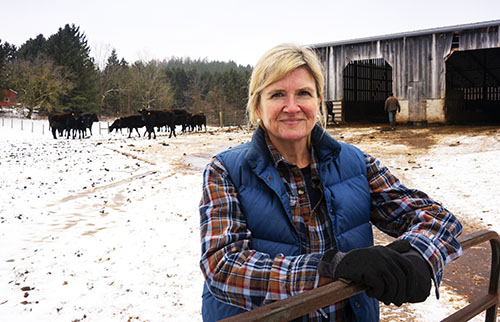Winter Check-up for the Beef Herd
Dec 27, 2021

Winter is in full swing and most beef producers are busy keeping hay in front of their cows, providing supplemental feed, and checking for newborn calves. During this busy time it is easy to be caught up in the hectic daily routine, but do not lose sight of the big picture. For spring-calving herds, winter feeding coincides with the last third of gestation and early lactation. Sensible decisions now can have a significant impact on the health of newborn calves, the amount of milk produced by their mother, and how soon the cow breeds back after calving. Keep the following in mind as spring approaches:
For more content like this, check out the latest issue of the Cooperator.
- Cows in the last third of gestation require a considerably higher level of nutrition than do dry cows in early gestation. Supplementing hay with additional nutrition in the form of complete feeds, blocks, or tubs may be beneficial.
- In preparation for calving, make sure your calving kit is well stocked and readily available. Essential items would include a calf puller, obstetric chains and handles, plastic sleeves, lubricant, antiseptic, naval dip, paper towels, and a headlamp.
- Review procedures regarding when and how to provide calving assistance. Lack of progress for more than one hour or an abnormal presentation indicate the need for help.
- Cows need to calve once every 365 days to be considered reproductively efficient. That leaves roughly 82 days after calving for the cow to return to estrus and conceive. Since body condition is the best indicator of reproductive status, supplement as needed to achieve a body condition score of 5 to 6 at breeding.
- Grass tetany often occurs in late winter and early spring and is associated with low levels of magnesium in new growth of cool-season grasses. Hi-mag mineral supplements, blocks, and tubs are effective ways of providing supplemental magnesium.
For more content like this, check out the latest issue of the Cooperator.